Muse Pi Pro is a feature-packed, credit card-sized SBC powered by the SpacemIT M1 octa-core 64-bit RISC-V AI SoC with a 2 TOPS NPU and equipped with up to 16GB LPDDR4x and 128GB eMMC flash.
The single board computer features gigabit Ethernet and a WiFi 6 + Bluetooth 5.3 module for connectivity, HDMI and MIPI DSI display interfaces, two MIPI CSI interfaces, a 3.5mm audio jack, four USB 3.0 ports, an M.2 socket for an NVMe SSD or wireless module, a mini PCIE socket for WiFi and 4G LTE/5G cellular connector, and a 40-pin GPIO header for expansion. That’s quite a lot of features for such a compact board.
Muse Pi Pro specifications:
- SoC – SpacemiT M1 (similar to SpacemIT K1, but clocked at 1.8 GHz)
- CPU – 8-core X60 RISC-V processor @ 1.8 GHz
- GPU – Imagination IMG BXE-2-32 with support for OpenGL ES3.2, Vulkan 1.2, OpenCL 3.0; 20 GFLOPS
- VPU – H.265 and H.264 1080p60 decoding/encoding
- NPU – 2.0 TOPS (INT8) AI accelerator
- RVA 22 Profile RVV 1.0 compliant
- System Memory – 8GB or 16GB LPDDR4X @ 2,400 MT/s
- Storage
- 64GB or 128GB eMMC 5.1 flash
- MicroSD slot (UHS-II)
- M.2 M-Key 2230 socket for NVMe SSD
- Display I/F
- HDMI 1.4 up to 1080p60
- 2-lane MIPI DSI up to 1080p60 via 15-pin FPC connector
- Camera I/F
- 4-lane MIPI CSI via 22-pin FPC connector
2-lane MIPI CSI via 15-pin FPC connector
- 4-lane MIPI CSI via 22-pin FPC connector
- Audio – 3.5mm audio jack
- Networking
- Gigabit Ethernet RJ45 port
- Wi-Fi 6 & Bluetooth 5.2 module with two u.Fl antenna connectors
- Support for additional wireless/cellular module via M.2 or mPCIe socket
- USB
- 4x USB 3.0 Type-A ports
- 1x USB 2.0 Type-C OTG port
- Expansion
- M.2 M-Key socket (PCIe 2.1 x2); used for storage, wireless, or other modules
- Full-size miniPCIe socket (PCIe 2.1 x1) for 4G LTE/5G, PCIe network modules
- 40-pin GPIO header (mostly compatible with Raspberry Pi GPIO header)
- Debug – UART TTL debug port
- Misc
- Reset, power, and flash (FEL) buttons
- RTC battery connector
- Optional
- Power Supply – 5V/9V/12V up to 3A via USB-C port (USB PD compliant)
- Dimensions – 85×56 mm (Raspberry Pi/credit card form factor. The company also calls this a FEMTO-ITX board.)
- Temperature Range
- Consumer-grade – -20°C to 70°C
- Industrial-grade – -40°C to 85°C
- Reliability – ESD: ±4kV contact / ±8kV air
- CE/FCC compliant
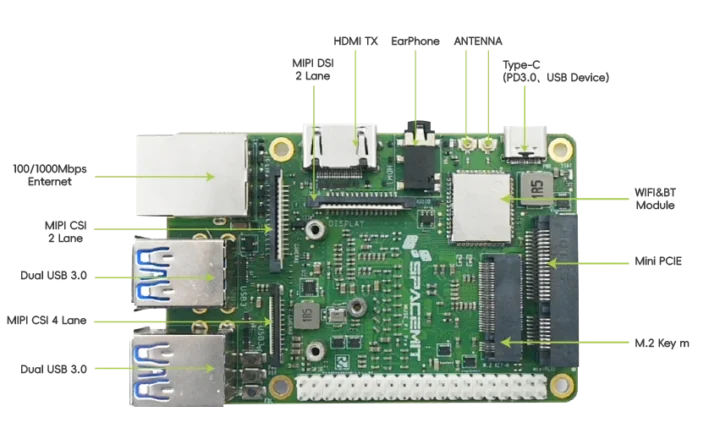
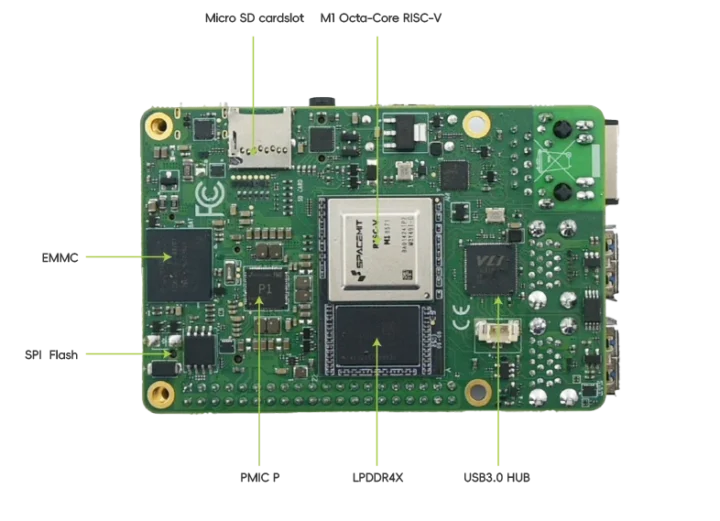 Software size, the Muse Pi Pro is said to support Bianbu Desktop (as reviewed with the Jupiter mini-ITX SBC with the same SoC), Ubuntu, OpenKylin, Deepin, Fedora, and others. However, the documentation website (available in Chinese and English) only provides instructions for the Ubuntu-based Bianbu Desktop OS, and looking at the download directory, I can also see minimal and NAS images for the board.. Having said that, UEFI support (section 4 of the user guide) would explain why they claim support for a long list of operating systems.
Software size, the Muse Pi Pro is said to support Bianbu Desktop (as reviewed with the Jupiter mini-ITX SBC with the same SoC), Ubuntu, OpenKylin, Deepin, Fedora, and others. However, the documentation website (available in Chinese and English) only provides instructions for the Ubuntu-based Bianbu Desktop OS, and looking at the download directory, I can also see minimal and NAS images for the board.. Having said that, UEFI support (section 4 of the user guide) would explain why they claim support for a long list of operating systems.
Despite its name, the Muse Pi Pro looks to be a cost-down/smaller version of the Muse Pi board introduced earlier. Note that most RISC-V SBCs should only be considered developer boards, unless you use them for headless applications without the need for graphics and video acceleration, since software support is still a work-in-progress, and your mileage may vary.
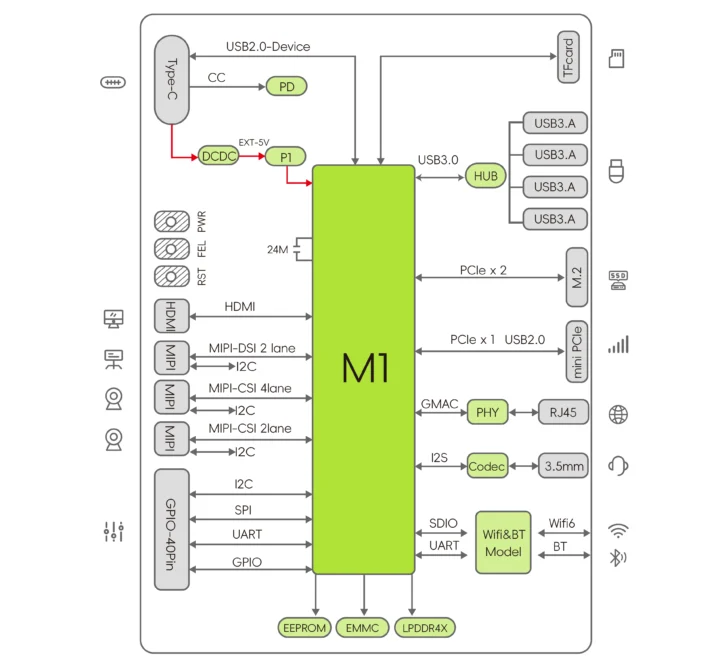
The Muse Pi Pro SBC can be purchased on AliExpress for $122.42 in 8GB/64GB configuration without cooling. There are multiple options/bundles, including a full kit with a touchscreen display, a heatsink, and the 64GB/128GB board that goes for about $180. The seller on AliExpress (Chip Board House Store) is most likely not the manufacturer, and the company usually resells boards from manufacturers with a markup, so you could save a few dollars by waiting until it is sold through an official channel. In any case, the performance/price ratio will still not be at the level of Arm-based equivalents, unless you make use of all the board’s features.
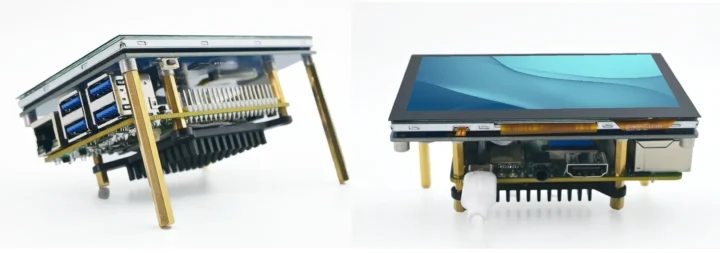

Jean-Luc started CNX Software in 2010 as a part-time endeavor, before quitting his job as a software engineering manager, and starting to write daily news, and reviews full time later in 2011.
Support CNX Software! Donate via cryptocurrencies, become a Patron on Patreon, or purchase goods on Amazon or Aliexpress


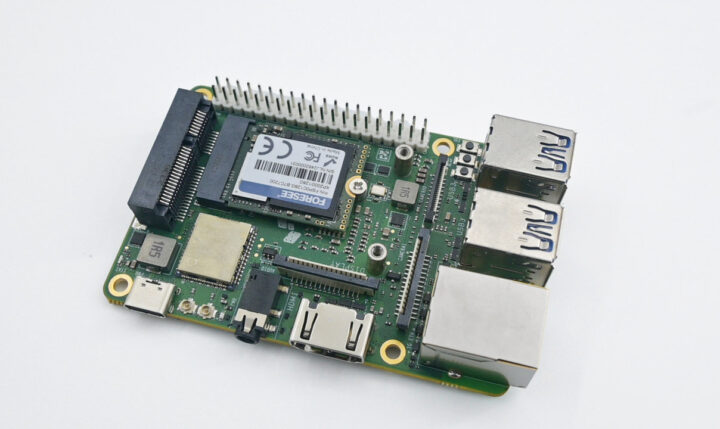



So more expensive than the Banana Pi BPI-F3. That’s a bold proposition.
The boards are offered with different memory/storage capacities, though. The BPI-F3 has 2GB/8GB or 4GB/16GB models, while the Muse Pi Pro starts at 8GB/64GB.
I forgot about the Orange Pi RV2 that sells for $50 with 8GB RAM (but no storage). A 64GB microSD card adds about $10 to $15.
Orange Pi RV2 has a standard eMMC socket too which is faster than microSD for similar cost.
The Muse Pro page has been removed from AliExpress.
Are you based in the US? It might be why. They won’t ship to the US because of customs duties. Too risky, especially if the parcel is declined/returned, as they may have to pay Chinese tariffs on it.
Due to regulations, products may also take a few days to be listed/available for European countries.
The spacemit K1 is getting a lot of support which is good for Risc-V as a whole. The linux distros have come a long way, Bianbu, Revyos, Deepin, OpenKylin and Ubuntu are all pretty usable on K1 boards now.
must pi pro is a SOM core board on base board ,so easy to DIY a base bord